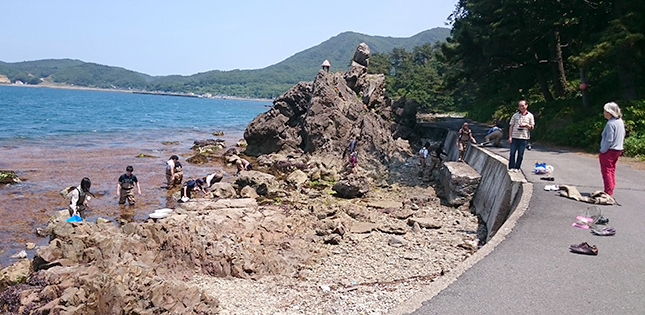International Marine Biology Course (June 18 - 25)
Tohoku University's Research Center for Marine Biology at Asamushi recently held a week-long International Marine Biology Course, for students majoring in biology, life sciences and related fields.
The theme was "Introduction of Marine Invertebrates as Tools for Studies on Oocyte Maturation, Fertilization and Early Development."
Five professors from the world's top institutes were invited to conduct sessions and share their expertise. According to chief course coordinator Professor Keiichiro Kyozuka, the purpose was to introduce the region's many marine animals with interesting phenomena, and to encourage a cross-cultural sharing of ideas.
"The course was of an undergraduate-master level, but even for PhD students like me, it was really profitable and we still learnt a lot of new stuff," said Gonzalo Quiroga Artigas, a PhD student at the Université Pierre et Marie Curie (UPMC) in France. "One of the most interesting things I learnt is the use of EdU (5-ethynyl-2'-deoxyuridine) to label cells that are dividing or have divided."
Throughout the week, the students attended sessions in laboratories and engaged in outdoor field work.
"On Friday morning, they went to the seashore and collected tiny jellyfish and induced spawning in the laboratory for the observation of fertilization," said Professor Kyozuka. "For most of them, this was the first time they experienced catching jellyfish in the sea. They were surprised that the jellyfish are so tiny. They also fed jellyfish under microscopes."
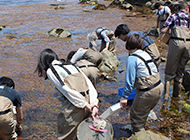 |
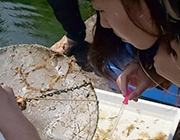 |
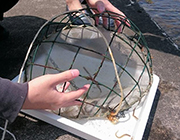 |
Jun Howard, a 3rd year Applied Marine Biology student, said he especially enjoyed the session on "Fertilization and the Power of Echinoderm" by Professor Gary Wessel from Brown University. The group studied starfish and sea urchin.
"It was really interesting because not only does it have a single focused aspect of one particular group of animals, but in his lecture he also made comparisons of the same process which occurs throughout a variety of organisms," explained Jun. "In this way we are reminded that to better understand a single aspect, we need several perspectives in order to see the general or bigger picture."
"With starfish, they understood that oocytes in the gonad are immature and could not fertilize," added Professor Kyozuka. "Maturation inducing hormone is necessary to induce oocyte maturation for success of fertilization and further development."
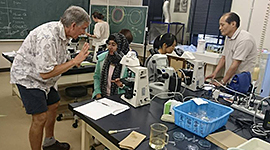 |
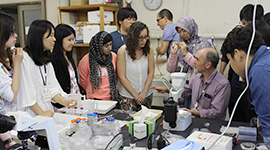 |
Students also collected ascidiella - known as sea pineapple or hoya - for their session with leading ascidian expert Professor Alex McDougall. As the breeding season in this region is almost over, additional ascidians with fully grown gonads were brought in from Hokkaido.
"I had never worked with ascidians and echinoderms, so that was especially interesting for me," said Quiroga Artigas.
Also providing their expertise throughout the week were Professor Stephen A. Stricker from the University of New Mexico; Professor Luigia Santella from Italy's Stazione Zoologica Anton Dohrn and Professor Evelyn Houliston from Villefranche-sur-Mer Marine Station in France.
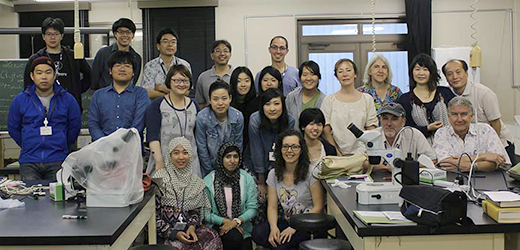
Away from classes, students were given a further chance to interact informally with the professors as they shared meals and living quarters. Nightly conversations ranged from new experimental techniques being used in the field, to cultural differences between countries.
"It was really fun to talk to many people who possess such deep passion for their study and also each with their own unique personality," said Jun, who is originally from Indonesia.
"It was a great opportunity to communicate with people from different countries," said Tatae Kitani, who's Japanese and a 4th year Agricultural Science student. "It helped me to know the customs of other countries and make friends who can help with my research and teach me English!"
A total of 15 students participated in the course, eight of them from universities abroad. According to Professor Kyozuka, the lecturers were impressed with the caliber of all the participants. "The students were very positive about learning. They were active in discussion and asked many questions."
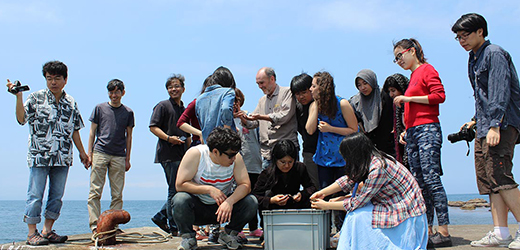
The Research Center for Marine Biology is located at Asamushi in Aomori. It faces Mutsu Bay, and provides easy access to mammals and sea creatures from the Pacific Ocean and the Sea of Japan. The Center hosts Marine Biology courses every year, but this is only the second time that it has included students from universities abroad.
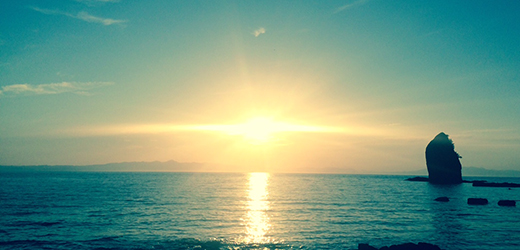
For enquiries about the course:
The Research Center for Marine Biology, AsamushiTohoku University
039-3501, Sakamoto 9, Asamushi, Aomori, Japan
Tel: +81 17 752-3388
Fax: +81 17-752-2765
Email: asamushi
 bureau.tohoku.ac.jp
bureau.tohoku.ac.jphttp://www.biology.tohoku.ac.jp/lab-www/asamushi/index.html
For enquiries about this article:
Tohoku University International PR SectionTel: +81-22-217-4816
Fax: +81-22-217-4818
Email: public_relations
 gpr.tohoku.ac.jp
gpr.tohoku.ac.jp
